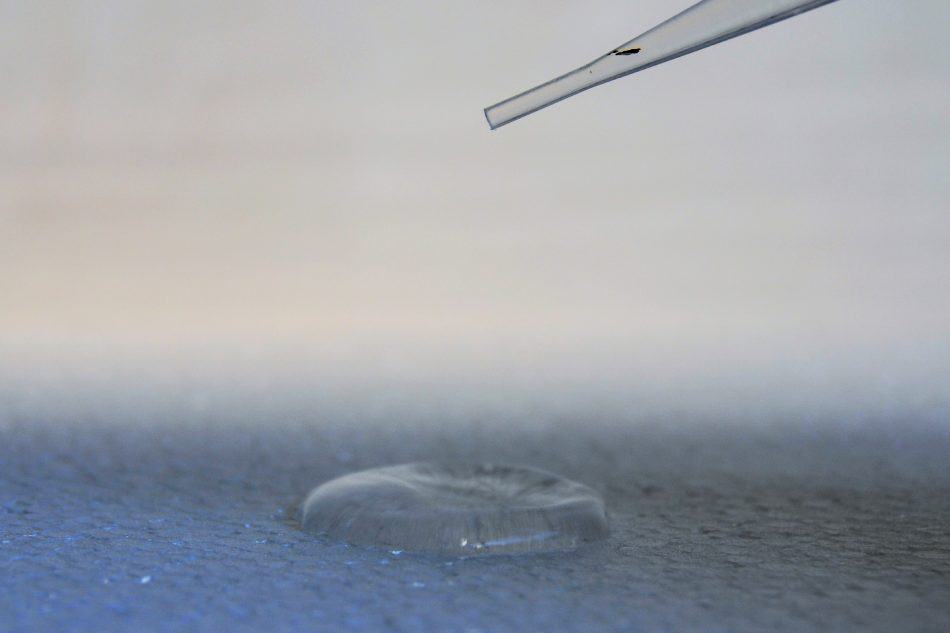Airbrush equipment can get quite expensive, but that’s all up front cost. The long term cost of airbrushing is in the paints and thinners. To which can be quite expensive, especially the reducers… And to be honest, those store bought thinners look and act pretty much exactly as water does…
So why can’t water simply be used to reduce airbrush paint, instead of that expensive water like liquid that is known as airbrush thinner???
Well, I feel your frustration. I personally have moved away from purchasing store bought paint thinners simply for the fact that they are so expensive. I have since moved on to alternatives. But I haven’t quite gone as far as using simply water alone to reduce my airbrush paint.
Nonetheless, this question has sparked my curiosity substantially. So I did some in-depth research on the topic and came up with a few conclusions…
Water Is known To Break Down The Paint
Simply put, water is known to break down the binder within acrylic paint. And given that most airbrush paint is acrylic. That means water will break down your airbrush paint.
But this isn’t as black-and-white as simply saying adding even a smidge of water will break down your paint. Rather it’s more about how much water you can add before it begins to break down the paint.
For example, I use createx airbrush colors as my paint of choice for airbrushing. While doing research for this article I came across the “TDS” (technical data sheet) on that exact paint (createx airbrush colors). Shortly down the page it stated that “distilled & deionized water can be used to thin the paint up to 10% per volume” (source).
Shortly thereafter they state, “exceeding this may affect adhesion and dry times.”
This makes me believe that water can be used to reduce most brands of airbrush paint but only to a certain extent before it begins to harm the paint quality…
Later there after I came across another article discussing specifically the problems with reducing acrylic paint using simply water.
I’ll link to it here if you’d like to go read it yourself.
But simply put, It went deep into the workings and technical data behind why using water to thin acrylic paint is such a bad idea…
Basically speaking, using water by itself will break down the binder within the paint which will result in adhesion issues. (Similar statement as found in the example above…)
“Adhesion Issues” – simply refers to the paint losing its ability to stick to the surface being painted, as well as its self…
A paint will commonly experience adhesion problems when it is binder poor. The binder in the paint is basically like glue within the paint that holds the pigment together, and helps it to stick to the surface being painted…
If a paint is binder poor is simply means the binder has been diluted to much with another liquid. In this case that liquid would be water.
Nonetheless, (still referring to the same article) they did discuss using an acrylic medium to thin down acrylic paint instead of water… Its not as thin as water, but it won’t break down the binder within the paint, if anything it will strengthen it.
Now this made me draw an interesting conclusion.
Given that most airbrush paint reducers sold in the stores isn’t laced with acrylic medium, does that mean they will break down the binder in the acrylic airbrush paint the same as water would???
I mean most store bought airbrush thinners are said to be made using some or all of the following:
- Distilled Water
- Isopropyl Alcohol
- Flow Aid
- Paint Retarder
And possibly a few other ingredients they haven’t disclosed. However, I have yet to see a reducer that includes acrylic medium within the thinner. Typically acrylic medium is purchased separately, and added to the paint rather then the reducer when needed.
Some even use acrylic airbrush medium as their reducer. It keeps the paint binder rich. Check the video below of a comparison between thinning acrylic paint using water vs. acrylic medium. The results are kinda surprising. However, given that most airbrush thinners found in stores aren’t laced with acrylic medium, I’d assume you’d get the same result using airbrush thinner as you would water in the example below.
The only difference I’ve come to between store bought airbrush thinners & water is that they are laced with ingredients to improve the way the paint acts before it hits the canvas, and even shortly after. But I assume the end result is the same…
Anyway, take a look at this video: It’s not specific to airbrush paint, however given that airbrush paint is usually acrylic based it relates well.
Now, its my belief (based on my experience) that a comparison of over reducing paint using water vs. airbrush paint thinner would result in the same outcome as found in the video. The real trick to maintaining a binder rich paint is by adding an acrylic medium. No matter if your using straight water, or the recommended paint thinner…
However, keep in mind, most of the manufactured airbrush paint reducers available are designed specifically for the brand of paint their tied to.
So you can’t be surprised if the paint acts differently when thinned with straight water as compared to the recommended reducer… As the manufactured reducer is likely going to have some of the ingredients listed above to better improve the manor at which the paint acts…
So my conclusion to this question is,
Assuming your airbrush paint is water based, water alone is okay to be used for thinning the paint mildly. However, It lacks the added ingredients that make the paint more workable with an airbrush.
If you choose to use water as your airbrush paint thinner, I’d recommend you opt for distilled water, as it doesn’t have the impurities commonly found in tap water. And be sure not to over reduce the paint, creating a binder poor situation. If this happens, an airbrush acrylic medium will likely be needed to bring back some of the adhesion power lost, or of course simply more paint.
Conclusion
I have come across many people within the airbrush community that say specifically that they use water to thin down their paints and haven’t had a single issue. As well, I’ve heard people say water alone isn’t a good idea…
At the end of the day, its all up to you. If you choose to use water for thinning your paint, I’d simply suggest you experiment with it first before applying it to your finished piece. As well, be sure to use distilled water (not tap water). There are typically a lot of minerals in tap water that can mess with your paint…
Idea: You could always just use water to thin your paint when practicing, and use the recommended thinner for the paint your using when painting something of value… Just an Idea.
Now, If you’re looking for a cheaper paint thinner option for your airbrush needs, I have put together a post of a few of my favorite homemade airbrush paint thinner recipes. Feel free to take them and experiment with them as you’d like. Many of the ingredients listed in them are meant to make the paint more workable when airbrushing, aside from only using water, and best of all their cheap.
Anyway, I hope you were able to find some value here! If you have any further questions regarding the airbrush do be sure to take a look around the website. Airbrush Insider is dedicated to helping all in the airbrush community!
This is Colt signing off!
Check Out Some Of My Favorite Airbrush Equipment:

